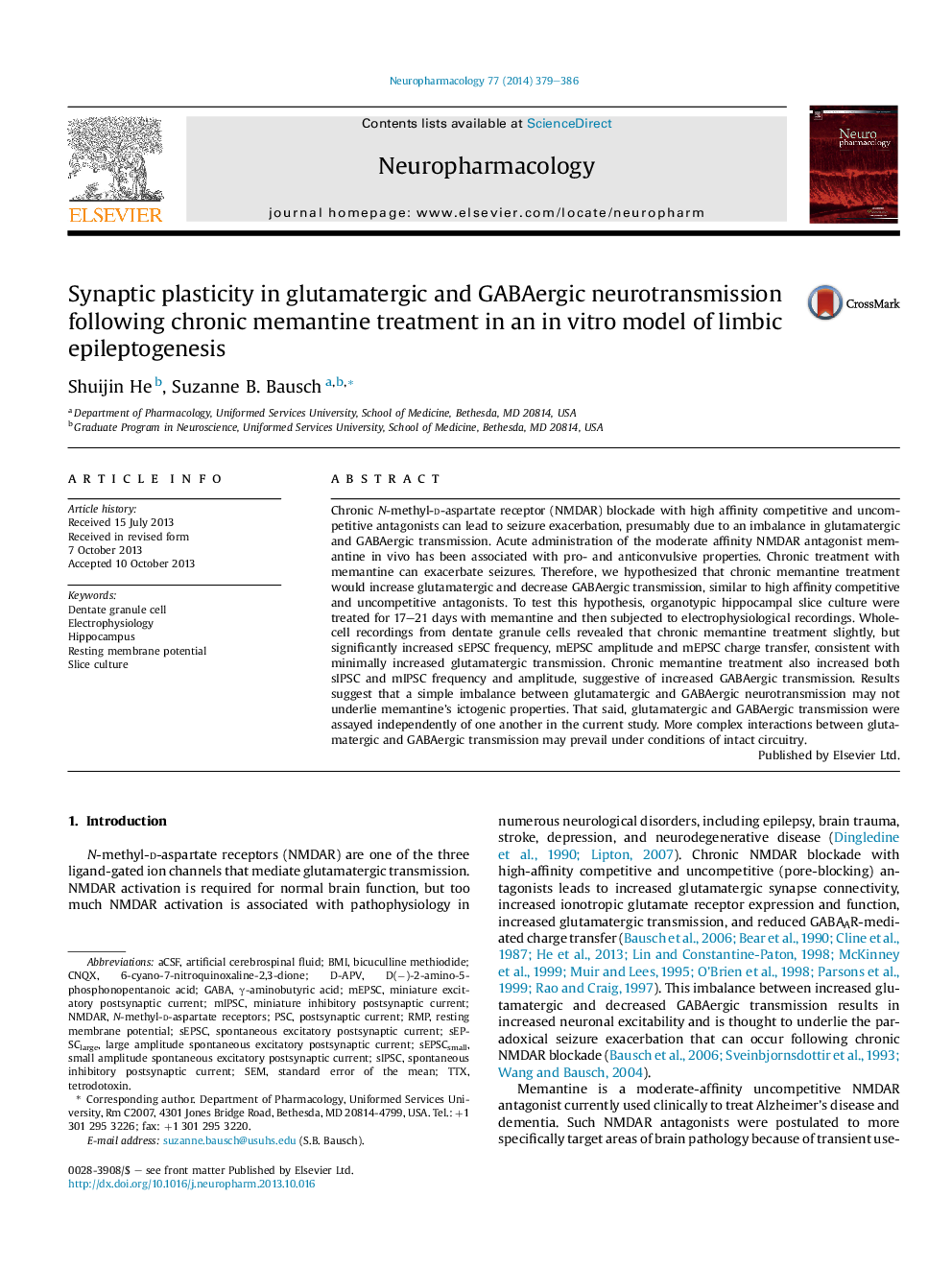| کد مقاله | کد نشریه | سال انتشار | مقاله انگلیسی | نسخه تمام متن |
|---|---|---|---|---|
| 5814894 | 1556637 | 2014 | 8 صفحه PDF | دانلود رایگان |

- Chronic memantine treatment slightly increased glutamatergic transmission.
- Chronic memantine treatment increased GABAergic transmission.
- Chronic memantine treatment elicited more negative resting membrane potential.
Chronic N-methyl-d-aspartate receptor (NMDAR) blockade with high affinity competitive and uncompetitive antagonists can lead to seizure exacerbation, presumably due to an imbalance in glutamatergic and GABAergic transmission. Acute administration of the moderate affinity NMDAR antagonist memantine in vivo has been associated with pro- and anticonvulsive properties. Chronic treatment with memantine can exacerbate seizures. Therefore, we hypothesized that chronic memantine treatment would increase glutamatergic and decrease GABAergic transmission, similar to high affinity competitive and uncompetitive antagonists. To test this hypothesis, organotypic hippocampal slice culture were treated for 17-21 days with memantine and then subjected to electrophysiological recordings. Whole-cell recordings from dentate granule cells revealed that chronic memantine treatment slightly, but significantly increased sEPSC frequency, mEPSC amplitude and mEPSC charge transfer, consistent with minimally increased glutamatergic transmission. Chronic memantine treatment also increased both sIPSC and mIPSC frequency and amplitude, suggestive of increased GABAergic transmission. Results suggest that a simple imbalance between glutamatergic and GABAergic neurotransmission may not underlie memantine's ictogenic properties. That said, glutamatergic and GABAergic transmission were assayed independently of one another in the current study. More complex interactions between glutamatergic and GABAergic transmission may prevail under conditions of intact circuitry.
Journal: Neuropharmacology - Volume 77, February 2014, Pages 379-386